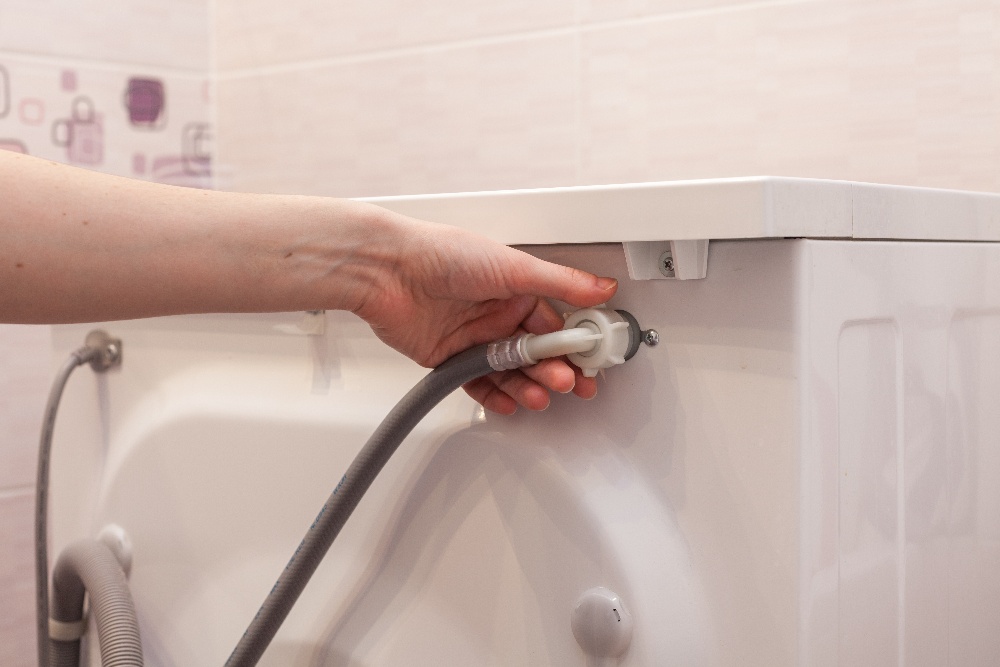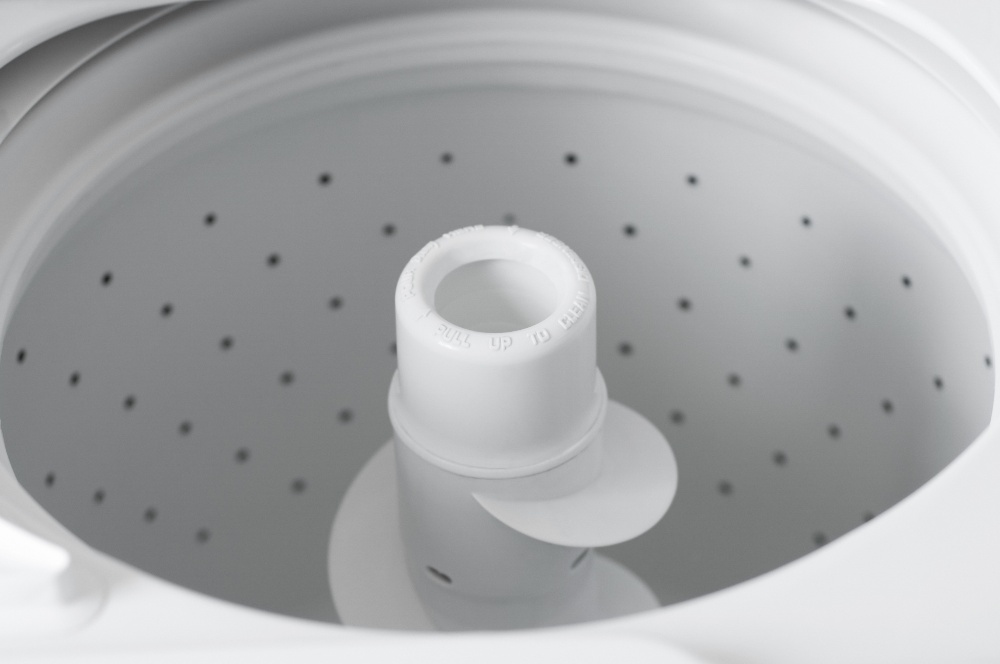If your washing machine isn’t cleaning clothes the way it used to, you don’t have to walk around with stains on your shirt or drop piles of cash on a dry cleaning service.
With certain issues, it may be possible to repair a washing machine on your own – or even avoid a repair altogether by changing the way you operate the machine. Here, we’ll show you how to tell if your washing machine needs fixing, as well as how to repair a washing machine agitator – often the biggest culprit if your clothes aren’t coming out as clean as you’d like.
And, of course, if you’ve got a washing machine broken beyond the ability to troubleshoot at home, you can request a Puls technician to come to you – often on the very same day.

Water Level
 Believe it or not, if your washing machine isn’t cleaning clothes properly and you don’t see any overt signs of damage, it’s entirely possible that the clothing-to-water ratio is simply too high.
Believe it or not, if your washing machine isn’t cleaning clothes properly and you don’t see any overt signs of damage, it’s entirely possible that the clothing-to-water ratio is simply too high.
Clothing needs room to move and flow beneath the soapy water – that movement and friction against the other articles of clothing is what gets your clothes the cleanest. If the clothing can’t move, or is even sticking up above the water level, it won’t get clean. Here’s what you can do to prevent that.
-
Set the water level for the appropriate load size. As a rule of thumb, a small load is ¼ of a standard rectangular laundry basket, a medium load is ½ of a basket, and a large load is a full basket.
-
Don’t exceed the recommended amount of detergent if you see your clothing is not getting clean. This will only add undissolved detergent residue to your clothing.
-
In a top-loading washing machine, don’t wrap clothing around the agitator – rather, fold it in half and place it in a semicircle. Encircling the agitator with one article of clothing or fabric can cause it to jam, preventing your clothing from getting fully clean.
Damaged Agitator
 It’s also possible that the agitator isn’t spinning and locking properly due to a mechanical failure. This can have a direct impact on the cleanliness of your clothing – as we said above, the agitator gets the clothing moving, and that movement and friction is key to fresh clothes.
It’s also possible that the agitator isn’t spinning and locking properly due to a mechanical failure. This can have a direct impact on the cleanliness of your clothing – as we said above, the agitator gets the clothing moving, and that movement and friction is key to fresh clothes.
One easy way to check if your agitator isn’t working properly is to see if it spins freely in both directions when the washing machine is off. If it does spin freely both clockwise and counterclockwise, it’s a sign that there are worn components preventing it from locking as it should.
Here we’ll walk you through the steps of how to repair a washing machine agitator. You’ll need a pair of needle-nose pliers, a socket wrench, a toothbrush or other small scrubber, and replacement agitator dogs, which you can buy online or at most hardware stores.
-
Pop off the fabric softener cup to expose the inside of the agitator.
-
Using the needle-nose pliers, remove the o-ring seal inside the bottom of the agitator by just grabbing hold and firmly pulling upwards. You’ll now see a single bolt in the center of the agitator.
-
Unscrew that bolt with the socket wrench, holding the agitator base in place with your other hand so it doesn’t spin along with you and prevent you from undoing the bolt.
-
Lift the agitator completely up and out of the washing machine and set it on the floor. Removing the outer casing with the screw-like appearance is going to take a fair amount of force. Place one foot on either side of the agitator base, grab the plastic outer casing, and pull up, hard.
-
Once it’s separated from the base of the agitator, grab the bolt assembly with the needle-nose pliers and lift. Pull out any broken pieces, and clean the teeth of any grease and grime with the toothbrush.
-
Remove the bolt and washer with the needle-nose pliers, flip the assembly over, and remove the plastic ring. Get out any old broken pieces of the previous agitator dogs – give it a good bang, if you need to. Then, slip the 4 new agitator dogs into the designated slots – they should slide right in, like a puzzle piece.
-
Now, just put it all back together: replace the plastic ring over the new agitator dogs, flip the assembly over and replace the bolt and washer, put it back into the agitator, and reassemble.
-
Once your agitator is in back in place and reassembled, it should turn only in one direction, and lock up when you try to turn it back.
Puls can fix it
-1.jpg?width=1000&name=20181204-Puls-0175%20(2)-1.jpg) If your washing machine isn’t cleaning clothes as well as you’d like it to, it can be a sign of bigger underlying issues that can impact the life of the machine. Hop online to schedule an appointment with a Puls technician, who will be able to isolate the problem, let you know the exact cost, and fix it quickly and efficiently.
If your washing machine isn’t cleaning clothes as well as you’d like it to, it can be a sign of bigger underlying issues that can impact the life of the machine. Hop online to schedule an appointment with a Puls technician, who will be able to isolate the problem, let you know the exact cost, and fix it quickly and efficiently.
In most cases, you can have a technician at your house and have the problem solved within as soon as the same day that you book your appointment. What’s more, our 90-day guarantee on parts and labor means that you can rest easy, knowing that we stand behind the quality our repairs.
For skilled appliance repair technicians that come to you at a time that suits your busy schedule, look to Puls. Book an appointment today, and get on with your laundry routine today.



